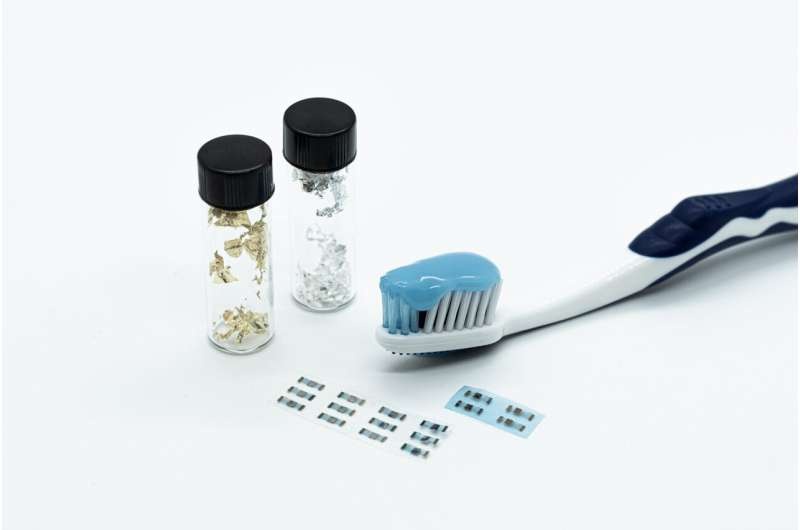Researchers at the Italian Institute of Technology have developed an edible transistor made from a common toothpaste ingredient, paving the way for the creation of smart pills that can monitor health conditions from within the body.

Copper Phthalocyanine: The Toothpaste Ingredient That Became a Transistor
The blue pigment (copper phthalocyanine) that forms the heart of this type of transistor is found in everyday commercial toothpaste. This substance is a whitening agent and will sit on the teeth all day, being gradually replaced by salivary exchange.
Researchers from Italian Institute of Technology’s Center for Nano Science and Technology (CNST) in Milan teamed with a dental researcher at the University of Novi Sad in Serbia to take a closer look at what makes this material so great. By running a laboratory simulation and analyzing previous clinical data, the researchers found that we swallow on average 1 milligram of copper phthalocyanine each time we brush our teeth. This finding made the researchers think of this pigment as a semiconductor and a candidate for organic electronics applications.
Building an Edible Transistor
Using a traditional recipe for edible circuits that they had previously developed, the research team incorporated copper phthalocyanine as semiconductor in small quantities. The devices are made on a substrate of ethylcellulose, and the electrical contacts are printed with inkjet printing by dispersing a solution of gold nanoparticles in a liquid medium (bases to prepare culinary decorations).
The edible transistor, which was developed in the Printed and Molecular Electronics laboratory led by Mario Caironi, has a “gate” made from a chitosan-based electrolytic gel—a food-grade gelling agent derived from crustaceans like blue crabs—allowing the transistor to operate at a low voltage of less than 1V.
Conclusion
Using a common toothpaste ingredient, the scientists have created an edible transistor and this breakthrough will be a key to success in the field of ingestible electronics. This innovation aims to redefine healthcare practices from inside the human body and has the capability to be incorporated in smart pills for health monitoring and various other medical applications. The prospects for ingestible electronics are growing brighter as the research team expands its search to other edible substances that have similar properties.
